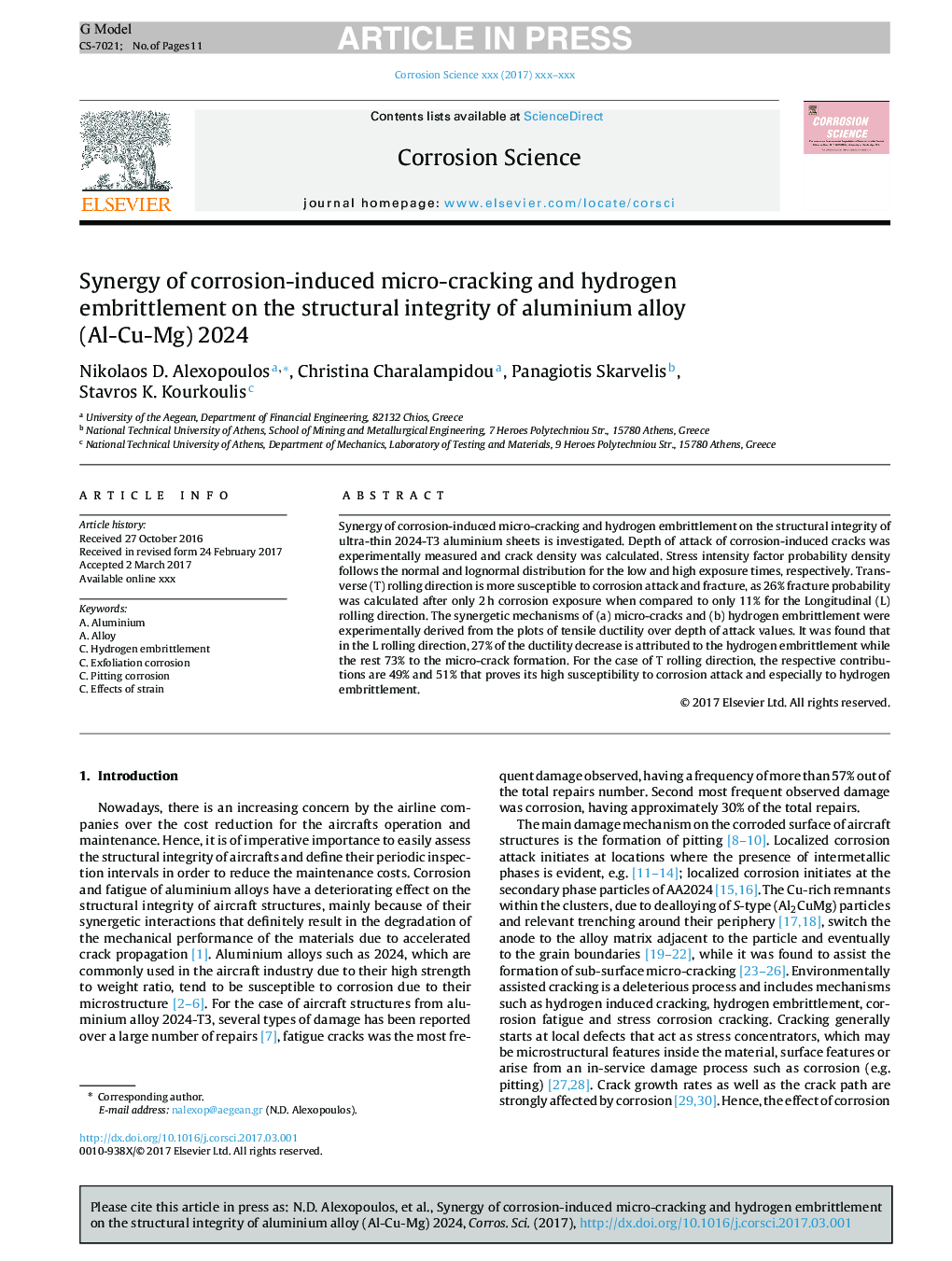| Article ID | Journal | Published Year | Pages | File Type |
|---|---|---|---|---|
| 5439902 | Corrosion Science | 2017 | 11 Pages |
Abstract
Synergy of corrosion-induced micro-cracking and hydrogen embrittlement on the structural integrity of ultra-thin 2024-T3 aluminium sheets is investigated. Depth of attack of corrosion-induced cracks was experimentally measured and crack density was calculated. Stress intensity factor probability density follows the normal and lognormal distribution for the low and high exposure times, respectively. Transverse (T) rolling direction is more susceptible to corrosion attack and fracture, as 26% fracture probability was calculated after only 2Â h corrosion exposure when compared to only 11% for the Longitudinal (L) rolling direction. The synergetic mechanisms of (a) micro-cracks and (b) hydrogen embrittlement were experimentally derived from the plots of tensile ductility over depth of attack values. It was found that in the L rolling direction, 27% of the ductility decrease is attributed to the hydrogen embrittlement while the rest 73% to the micro-crack formation. For the case of T rolling direction, the respective contributions are 49% and 51% that proves its high susceptibility to corrosion attack and especially to hydrogen embrittlement.
Keywords
Related Topics
Physical Sciences and Engineering
Materials Science
Ceramics and Composites
Authors
Nikolaos D. Alexopoulos, Christina Charalampidou, Panagiotis Skarvelis, Stavros K. Kourkoulis,
